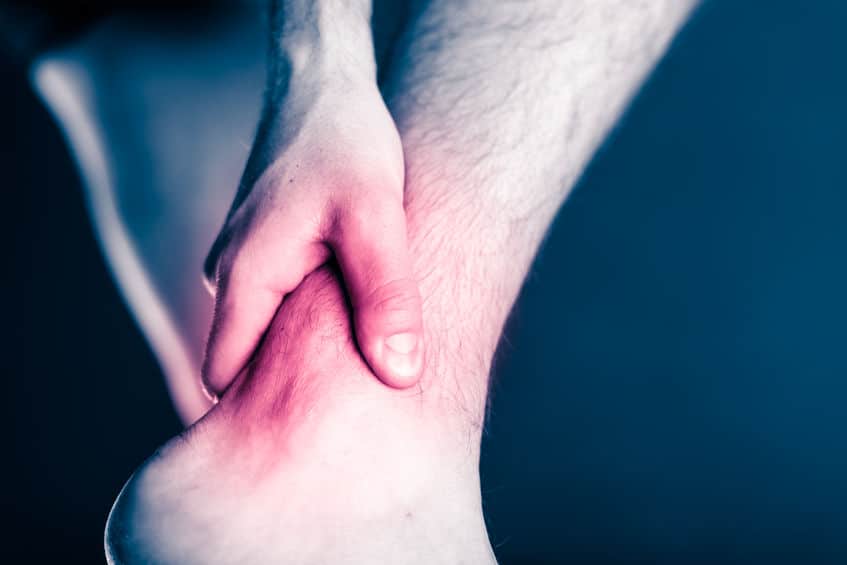The Stages of Ankle Arthritis
The ankle is a critical joint in our bodies. Not to say that other joints are less critical, but the ankle is a meeting point for cartilage, connective tissues, and tendons. The ankle is the lowest main meeting point of the muscles, tendons, and ligaments used for walking, running and jumping. It is essential for force and speed.
The downside to its importance is that all the force of these muscles and tendons around the ankle area makes the cartilage prone to damage, also known as arthritis. Cartilage coats the surface of a joint to allow motion when damaged, this is why movement becomes painful and less smooth.
Ankle arthritis can be painful, but the key is to understand what stage it is in so you can treat it quickly. Arthritis is a degenerative disease so, the longer you wait, the worse it gets.
Here at Warner Orthopedics & Wellness, we can determine your stage of arthritis and treat it, but there are some steps you can take to help alleviate and articulate the problem before it becomes too much to handle.
The early stage of ankle arthritis
In healthy ankles, cartilage covers the joints to protect them from friction. In ankles that are developing arthritis, this cartilage begins to wear down, therefore enabling the formation of pitting and irregularities of the surface. This is considered the early stages of ankle arthritis and is characterized by an uncomfortable or stiffening sensation in the ankle after a long day of walking or several hours of sitting.
The early stage can be a problematic one, as this pain is hard to distinguish from regular discomfort. It’s important to visit a doctor at this stage of ankle arthritis, so interventions can be made in time to slow the progression.
To remedy this stage of ankle arthritis, take some anti-inflammatory NSAIDs, such as ibuprofen or naproxen – if you aren’t allergic. Pair with this supportive footwear, low-impact activity, and a healthy, active lifestyle. Low impact aerobic activity has been shown to be best for cartilage health. Note that no activity is not good for cartilage.
Mid-stage ankle arthritis
Later, bone spurs develop in response to abnormal cartilage. Thus, this is the stage where you will begin to realize some discomfort and pain that may not be normal. Symptoms will become more noticeable, as you’ll experience varying levels of pain throughout the day that comes in waves, as well as occasional swelling.
Occasional rest and off-loading of the ankle may become necessary at this point. Doing so can help in the short term. However, for long-term solutions, it is better to stay somewhat active to keep your muscles strong so that they can support the ankle joint.
One remedy to this stage of arthritis, continue to take NSAIDs, do low-impact exercise, and meet with an orthopedic surgeon to determine the next steps. At this stage, surgery may be considered to remove spurs, clean up joins or stabilize or realign the ankle. Bracing and graded socks are often helpful. Rocker bottom shoes also and topical pain methods may also help with this.

End-stage ankle arthritis
The late stages of ankle arthritis are when the cartilage around the joint is almost entirely gone, leaving very little space between the bones, inhibiting motion. This may be true for all or just a portion of the joint. Spurs can be quite large as well.
At this stage, the ankle will be incredibly stiff and sometimes completely immobile. Simple activities like ascending/descending stairs and squatting can become impossible. In the later stages, the lubricating fluid in your joints is absent, so the friction on your bones is increased. Moving at this stage may be painful and could also be damaging to your bones.
However, many people can remain high-functioning and relatively pain-free, despite this arthritis. To treat this stage of arthritis, previous remedies (such as NSAIDs and light activity) may not be enough.
If you’re at this stage and the pain is affecting your daily life, contact an orthopedic surgeon immediately, as surgery could likely be needed. Your surgeon could also recommend a series of nonoperative remedies as well. These could range from physical therapy to acupuncture, to special shoes or CAM (complementary alternative medicine).
Arthritis is a painful disease that can get worse the longer you ignore it. Identifying that the pain or discomfort is in fact arthritis is an important step, and seeking help before symptoms worse is crucial.
Sometimes, our joints are sore, stiff, and hurt a little, especially at older ages. However, if it gets worse or you think it may be ankle arthritis, contact us today and get the help and care you need to recover!






